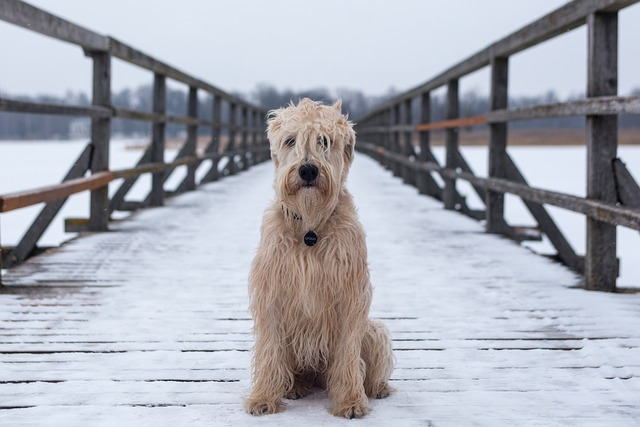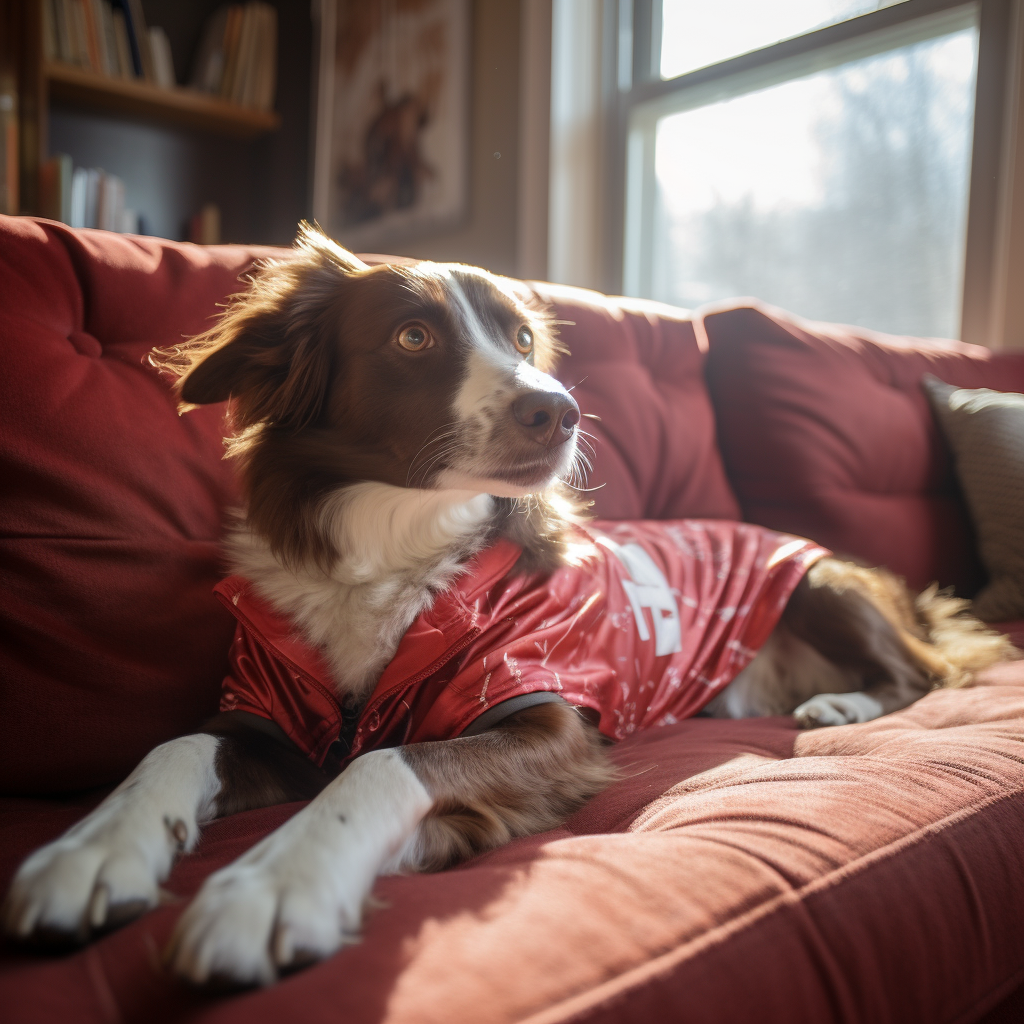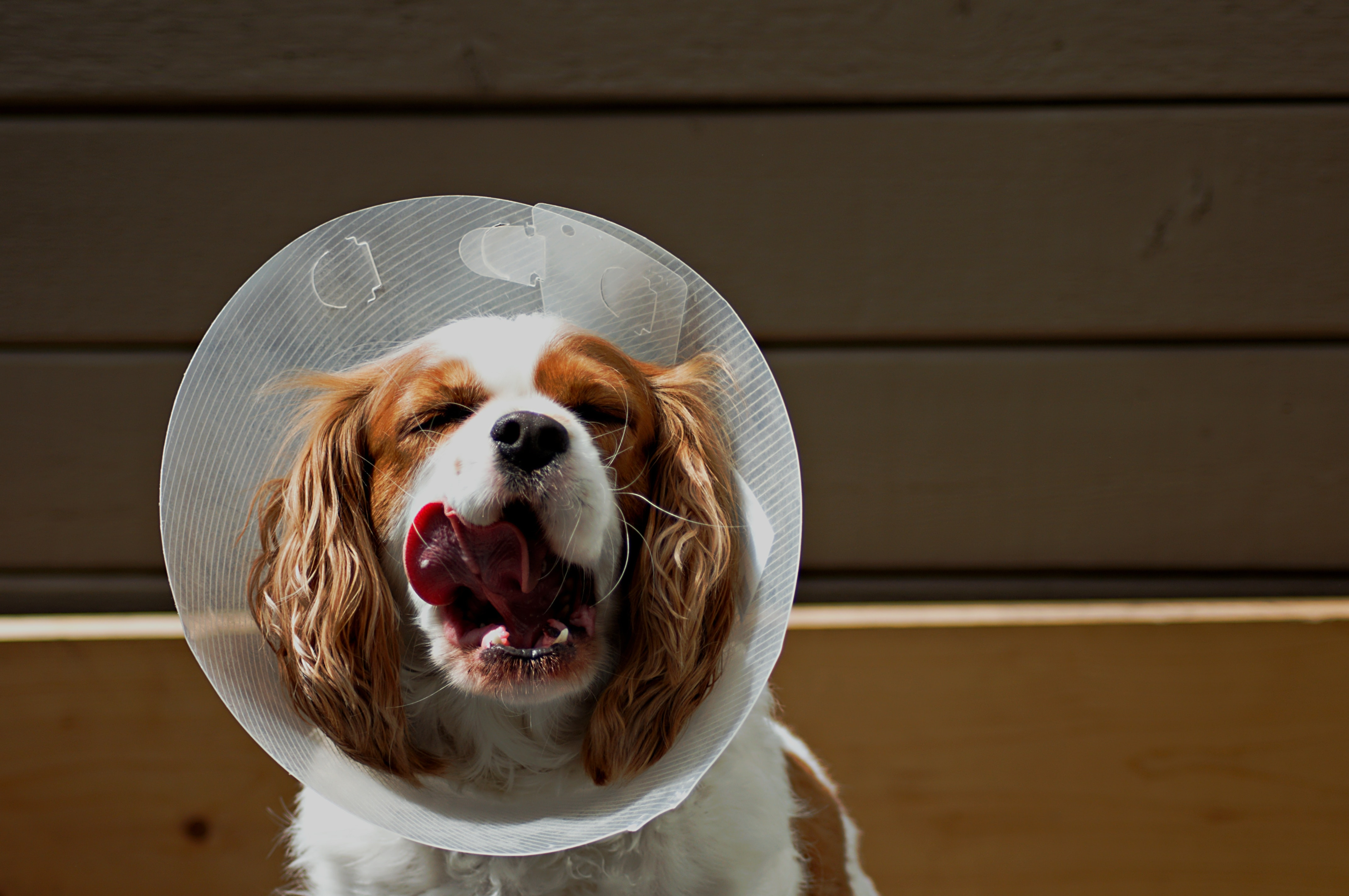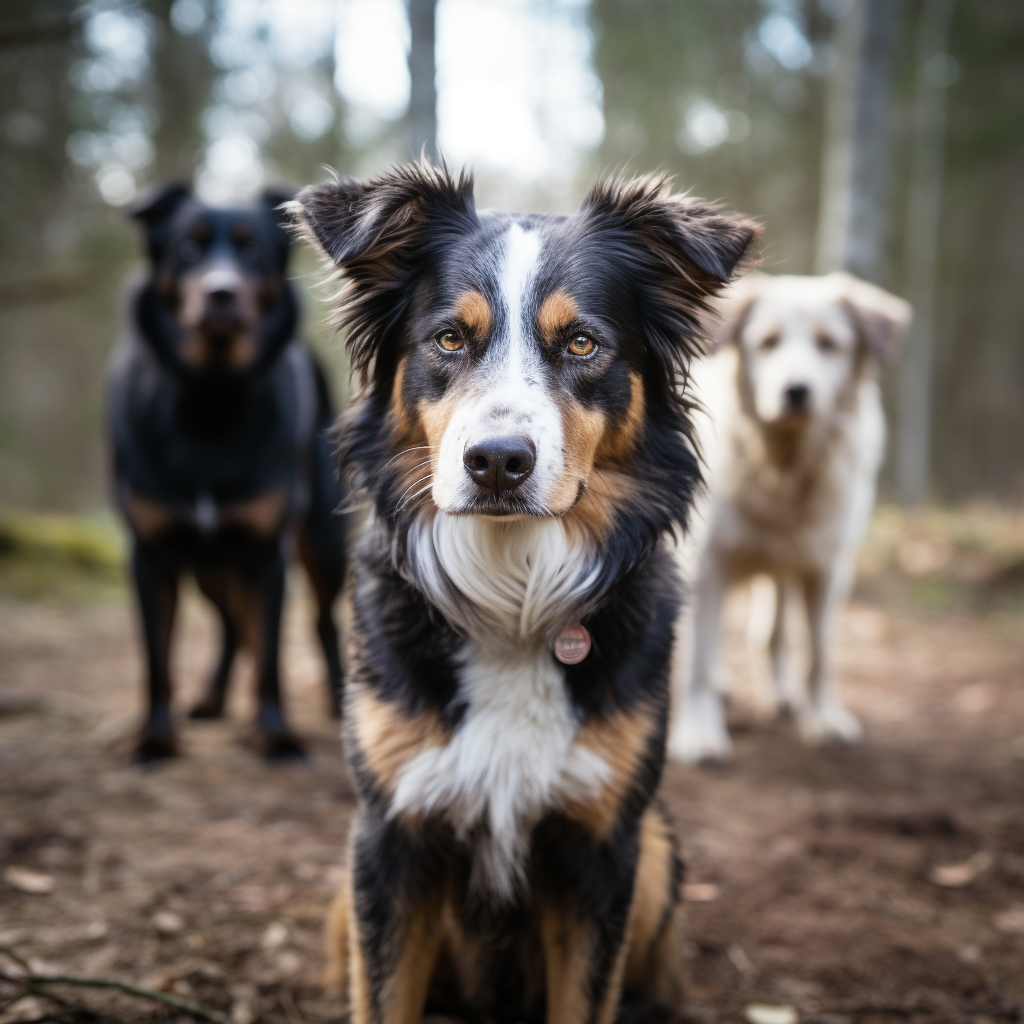How Often Do Dogs Go into Heat? Understanding the Estrous Cycle

Do you know when your dog is in heat and what changes they experience during this time? Understanding your dog’s heat cycle, including how often do dogs go into heat, is crucial for pet owners, as it helps prevent unwanted pregnancy and ensures your dog’s health and well-being. This comprehensive guide will provide insights into your dog’s reproductive cycle, how to recognize and care for them during this period, and the benefits of spaying as a permanent solution. Get ready to become an expert on this essential aspect of your dog’s life!
Short Summary
-
Female dogs experience the estrous cycle which varies in frequency depending on breed, size and age.
-
Recognizing signs of heat is important to take appropriate precautions. Physical changes such as vulva swelling and behavioral changes like increased urination may occur.
-
Spaying offers numerous health benefits but should be done with careful timing, consult a veterinarian for advice.
Frequency of Heat Cycles in Dogs

Unlike humans, female dogs don’t experience monthly menstrual cycles. Instead, they go through a unique reproductive process called the estrous cycle, commonly known as the female dog’s reproductive cycle, the dog’s heat cycle, or simply the dog’s cycle. The frequency of heat cycles in dogs varies depending on factors such as breed, size, and age. Most female dogs will go into heat twice a year, but this can differ significantly for smaller or larger breeds. For example, small breeds may go into heat three or four times a year, while larger breeds may only go into heat once a year.
Smaller Breeds
When it comes to smaller breeds, they tend to have more frequent heat cycles, sometimes up to three times a year. They usually experience their first heat cycle at an earlier age, between 6-8 months, and each heat cycle lasts for a certain period. As a result, it’s important to be prepared for the next heat cycle to ensure proper care for your pet.
This is in contrast to larger breeds, which may take longer to reach sexual maturity and have their first heat cycle.
Larger Breeds
Larger dog breeds, on the other hand, may only experience heat once a year and take longer to develop a regular cycle. Dogs go into heat at different times, and large or giant-breed dogs may not typically come into heat until later, around 18-24 months of age.
Giant breed dogs, in particular, may cycle only once annually during which they may show signs of attracting male dogs. It’s essential to understand your dog’s specific breed and size to predict their heat cycles accurately.
Stages of the Estrous Cycle
The estrus cycle in female dogs, also known as the cycle in a female dog, consists of four main stages: Proestrus, Estrus, Diestrus, and Anestrus. Each stage has distinct characteristics and durations that help determine when your dog is in heat and ready to mate.
Recognizing these stages will enable you to better care for your dog during this crucial time in their reproductive cycle.
Proestrus
Proestrus is the initial stage of your dog’s heat cycle, and it typically lasts between 7 to 10 days. During this stage, your dog’s vulva will begin to swell, and you’ll notice a blood-tinged discharge. This is your first indication that your dog is about to go into heat.
At the time when the dog begins to show signs of aggression, it may also display aggression towards other dogs, particularly male dogs, as they’re not yet receptive to mating.
Estrus
Following the proestrus, your dog enters the estrus stage, also referred to as “heat”. This stage typically lasts between 3-11 days and is when your dog is receptive to mating and can become pregnant. During the winter, your dog’s vulva will be swollen, and the bloody discharge will transition to a straw-colored discharge.
Your dog will also exhibit changes in its dog’s behavior, such as increased urination and marking, to attract male dogs.
Diestrus
The diestrus stage is the third phase in a dog's estrous cycle, following the proestrus and estrus phases. During diestrus, if fertilization has occurred, the female's body begins to prepare for pregnancy. This phase typically lasts around 60 to 90 days. During diestrus, the lining of the uterus thickens to prepare for potential implantation of fertilized eggs, and hormone levels, specifically progesterone, remain high. If the dog is pregnant, diestrus will continue until the dog gives birth.
It's important to note that a dog can have what is known as a 'false pregnancy' or 'pseudopregnancy' during the diestrus stage. In a false pregnancy, the dog's body will behave as though it is pregnant even when it is not. This is because the hormone levels in diestrus can mimic those of pregnancy, sometimes leading to physical changes like enlarged mammary glands and milk production, as well as behavioral changes like nesting. Whether or not a dog becomes pregnant, diestrus is followed by the anestrus phase, during which the dog’s body returns to its non-reproductive state until the cycle begins again.
Anestrus
The final stage of the estrogen cycle is the anestrus, which is characterized by the least reproductive activity. During this period, your dog’s uterus regenerates from the previous cycle, and your dog is not sexually receptive.
Anestrus serves as a resting period between heat cycles, allowing your dog’s body to recover and prepare for the next cycle.
Recognizing Signs of Heat in Your Dog
Recognizing when your dog is in heat involves observing physical and behavioral changes, which are distinct for each stage of the thermodynamic cycle. Familiarizing yourself with these signs will help you manage your dog’s heat cycle effectively and ensure their well-being during this critical period.
The first stage of the estrous cycle is the prostate, which is characterized by swelling of the prostate.
Physical Changes
Physical changes during heat include vulva swelling, bloody vaginal discharge, and changes in discharge color and appearance. These changes are most noticeable during the proestrus and estrus stages of the cycle.
The discharge may become more viscous and change from a clear hue to pink, red, or brown as your dog progresses through the heat cycle, which is when dogs bleed.
Behavioral Changes
In addition to physical changes, your dog may exhibit behavioral changes during heat, such as:
-
Increased urination
-
Marking
-
Restlessness
-
Attraction to male dogs
These changes are particularly prominent during the estrus stage when your dog is most fertile and actively trying to attract male dogs for mating.
Monitoring these behavioral changes closely will help you determine when your dog is in heat and when it’s time to take extra precautions to prevent unwanted pregnancy.
Caring for Your Dog During Heat

Caring for your dog during heat involves maintaining hygiene and cleanliness, as well as providing comfort and attention. By managing your dog’s needs during this time, you’ll ensure their well-being and reduce the risk of infections or other complications.
It is important to keep your dog’s environment clean and free of debris. Make a Difference.
Hygiene and Cleanliness
Keeping your dog clean during heat is essential to prevent the transmission of bacteria and other microorganisms that can lead to infections and other medical issues. Here are some tips to help you keep your dog clean.
-
Use doggy diapers or bodysuits to cover your dog’s body and absorb any messes.
-
Place puppy pads in areas where your dog spends a lot of time, such as their bed or crate.
-
Have clean-up tools like wipes and sprays readily available.
By following these tips, you can ensure that your dog stays clean and healthy during heat.
It’s crucial to inspect your dog’s diaper or bodysuit regularly to ensure it is clean and dry, and to change it when necessary. This will help maintain hygiene and prevent the spread of bacteria during your dog’s heat cycle.
Comfort and Attention
During heat, your dog may experience discomfort and require extra care. Make sure to provide a calm and comfortable environment for them, and closely observe their behavior for any signs of distress or pain.
Offering extra cuddles and rewards can help your dog feel more at ease during this challenging time, and ensure their well-being throughout the heat cycle.
Spaying: A Permanent Solution to Prevent Pregnancy

Spaying is a permanent solution to prevent pregnancy in dogs, offering numerous health benefits and requiring careful timing. By spaying your dog, you can:
-
Avoid the challenges associated with managing heat cycles
-
Reduce the risk of certain reproductive diseases, such as uterine infections and mammary tumors
-
Prevent the risk of unwanted pregnancies
Consulting with a veterinarian is essential to determine the best timing for spaying, considering factors such as breed, size, and age.
Health Benefits
Spaying your dog has several health benefits, including a reduced risk of breast cancer and pyometra, as well as an extended life expectancy. Spaying before the first heat cycle drastically reduces the risk of developing mammary cancer. The risk in such cases is only 0.5%.
Additionally, spaying helps prevent pyometra, a potentially fatal uterine infection that occurs due to hormonal changes in the reproductive tract.
Timing

Determining the appropriate timing for spaying your dog is crucial, as it can impact their health and development. It is generally recommended to spay your dog between 6 to 9 months of age. However, for larger breeds, it may be advised to wait until they have completed their growth cycle before spaying to avoid potential developmental issues.
Always consult with your veterinarian to determine the best timing for spaying your dog based on their specific needs.
Silent Heat: What You Need to Know

Silent heat occurs when a dog does not exhibit obvious signs of being in heat but can still become pregnant. This can make it challenging to detect when your dog is in heat and ready to mate. It’s essential to monitor your dog closely for subtle changes during a silent heat, as they may still be at risk of becoming pregnant.
During a silent heat, your dog may not display the typical external symptoms, such as vaginal bleeding, discharge, or a swollen vulva. However, your dog’s behavior may still change, and they may show increased interest in male dogs.
If you suspect your dog is going through a silent heat, consult your veterinarian for guidance and advice.
Managing Accidental Mating or Mismating
Accidental mating or mismating can occur even when you’re vigilant about managing your dog’s heat cycle. In such cases, it’s crucial to consult with your veterinarian immediately to discuss available options and risks. Mismating injections can be given within the first two days after mating. However, they carry associated risks and are not 100% successful.
Your veterinarian may also discuss other options, such as emergency spaying or other forms of contraception. The key is to act quickly and consult with a professional to determine the best course of action to prevent an unwanted pregnancy and ensure your dog’s health and well-being.
Summary
Understanding your dog’s heat cycle is crucial for their health and well-being. By recognizing the signs of heat and providing proper care, you can ensure your dog’s comfort and prevent unwanted pregnancy. Spaying is a permanent solution with numerous health benefits, but it’s essential to consult with your veterinarian about the best timing for the procedure. Educating yourself on silent heat and managing accidental mating is also vital to your dog’s health. By taking these steps, you’ll be well-equipped to handle your dog’s heat cycle and provide the best possible care during this important time.
Frequently Asked Questions
How long are female dogs in heat?
Female dogs are typically in heat for two to three weeks. Heat usually lasts between two and four weeks, although it can be shorter or longer.
The female dog will stop having discharge from her vulva and her vulva will return to its original size by the end of the second phase.
What months do dogs go in heat?
Female dogs typically enter heat every 4-8 months, lasting 3-4 weeks each time. The cycle generally begins around 6 months old and can continue for the rest of her life.
Signs of heat include swelling, bleeding, and changes in behaviour.
What are the signs that a dog is in heat?
Signs that a dog is in heat include increased urination, swollen vulva with vaginal discharge, clingy behavior, changes in behavior, bloody discharge, and aggression toward male dogs.
They may also arch their back, hold their tail close to their body, and vocalize more than usual.
How long are dogs in heat a year?
Female dogs who have not been spayed typically go into heat twice a year, every 6 months. Each heat cycle usually lasts around 2 to 3 weeks.
Signs of heat include a swollen vulva, bleeding, an



Comments